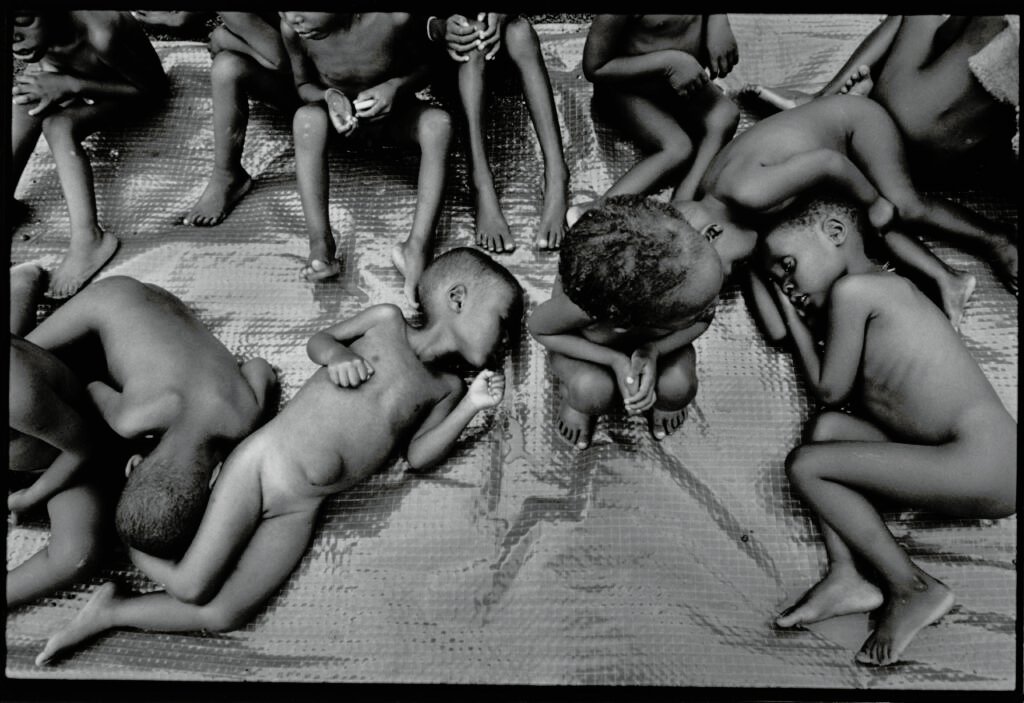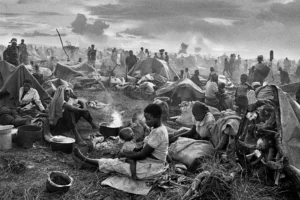The Rwandan Genocide (1994) stands as one of the most horrific atrocities of the 20th century. Over the course of approximately 100 days, an estimated 800,000 Rwandans were brutally murdered in a wave of ethnic violence. This event, characterized by its sheer brutality and the speed at which it unfolded, shocked the world and left a profound scar on Rwanda's history.
Background to the Rwandan Genocide
Understanding the Rwandan Genocide requires a look into the country's past. Rwanda, a small landlocked nation in East Africa, has a complex history of ethnic tensions primarily between two major groups: the Hutu and the Tutsi. These tensions, exacerbated by colonial influences and political power struggles, set the stage for the tragic events of 1994.
Historical Tensions
Rwanda's ethnic conflict dates back to the colonial period when Belgian colonizers favored the Tutsi minority over the Hutu majority. This favoritism entrenched a societal divide, sowing seeds of resentment that would later erupt into violence. After gaining independence in 1962, Rwanda saw periodic violence and political upheaval, but nothing on the scale of what was to come.
Political Instability
The assassination of President Juvénal Habyarimana on April 6, 1994, was the spark that ignited the genocide. His plane was shot down near Kigali, and within hours, violence erupted across the country. The president's death created a power vacuum and heightened ethnic tensions, leading to an orchestrated campaign of mass murder.
The Outbreak of Genocide
The Rwandan Genocide didn't happen spontaneously; it was the result of careful planning and incitement by extremist Hutu leaders. The media, particularly the radio station RTLM, played a significant role in spreading propaganda and encouraging violence against the Tutsi population.
The Role of Media
Hate speech and inflammatory broadcasts fueled the genocide. RTLM broadcasted messages that dehumanized the Tutsi, referring to them as "cockroaches" and calling for their extermination. This relentless propaganda desensitized the population and incited ordinary citizens to commit unthinkable acts of violence.
Militias and Massacres
The Hutu extremist group known as the Interahamwe led the charge in executing the genocide. They were well-organized and armed, targeting Tutsi civilians and moderate Hutus who opposed the violence. Churches, schools, and even hospitals became sites of mass killings, as people sought refuge only to be slaughtered en masse.
Impact on the Population

The scale of the Rwandan Genocide is staggering. Communities were decimated, families were torn apart, and the country was left in ruins. The genocide also had profound psychological and social impacts on the survivors.
Human Cost
Approximately 800,000 people were killed during the genocide, often in the most brutal ways imaginable. The majority of the victims were Tutsi, but moderate Hutus who opposed the killings were also targeted. The methods of killing were often barbaric, with many victims hacked to death with machetes.
Survivors' Struggles
Survivors of the genocide faced immense challenges. Many were left with physical and psychological scars that would take years to heal. The social fabric of the country was torn, with countless children orphaned and families decimated. Rebuilding lives in the aftermath of such horror was a monumental task.
International Response
The international community's response to the Rwandan Genocide (1994) has been widely criticized for its inadequacy and inaction. Despite clear signs of impending violence, the world largely stood by as the genocide unfolded.
UN Involvement
The United Nations had a peacekeeping force in Rwanda at the time, known as UNAMIR, led by Canadian General Roméo Dallaire. However, the mandate and resources of UNAMIR were limited, and calls for reinforcements were ignored. The UN's failure to act decisively remains a controversial and tragic chapter in its history.
Global Indifference
Many countries, including major powers like the United States and France, were slow to recognize the genocide and reluctant to intervene. Political considerations and a lack of strategic interest in Rwanda contributed to the global indifference, resulting in a failure to prevent or halt the mass killings.
Places Associated with the Genocide
Several locations in Rwanda are etched into history due to their association with the genocide. These places serve as solemn reminders of the atrocities committed and are now sites of remembrance and education.
Kigali
As the capital city, Kigali was a focal point of the genocide. The Kigali Genocide Memorial is located here, serving as a museum and a burial ground for over 250,000 victims. It is a place of reflection and learning, where visitors can pay their respects and understand the enormity of the tragedy.
Murambi
The Murambi Genocide Memorial Centre, located in southern Rwanda, is another significant site. Formerly a technical school, it became a scene of mass murder where thousands of Tutsi sought refuge but were later killed. The site now stands as a chilling reminder of the brutality of the genocide.
Ntarama
Ntarama Church is infamous for the massacre that took place within its walls. Thousands of Tutsi were killed here after seeking shelter in what they believed to be a safe place. The church now serves as a memorial, preserving the memory of those who lost their lives.
Post-Genocide Recovery and Reconciliation
Rwanda's journey to recovery and reconciliation after the genocide has been remarkable but fraught with challenges. The country has made significant strides in rebuilding its society and fostering unity among its people.
Justice and Accountability
In the aftermath of the genocide, Rwanda established the Gacaca courts, a community-based justice system aimed at addressing the crimes committed. These courts provided a platform for survivors to confront perpetrators and seek justice. The International Criminal Tribunal for Rwanda (ICTR) was also set up to prosecute high-level genocide planners.
Economic and Social Development
Rwanda has focused on economic development and social cohesion as part of its recovery strategy. The government has implemented policies to promote unity and reconciliation, such as the abolition of ethnic identification on national identity cards. The country has also experienced significant economic growth, becoming a model for development in Africa.
Lessons Learned
The Rwandan Genocide (1994) serves as a stark reminder of the consequences of hatred and the dangers of inaction. It has taught the world valuable lessons about the importance of early intervention and the need for international cooperation to prevent similar atrocities.
Early Warning and Prevention
One of the key lessons from Rwanda is the importance of early warning systems and timely intervention. The signs of impending violence were evident, yet the international community failed to act. Strengthening global mechanisms for genocide prevention is crucial to avoid repeating such tragedies.
Importance of Justice
Ensuring accountability for those responsible for genocide is vital for healing and reconciliation. Establishing the ICTR and the Gacaca courts highlighted the necessity of bringing perpetrators to justice, offering a sense of closure to survivors and deterring future crimes.
Conclusion
The Rwandan Genocide (1994) remains a haunting example of the destructive power of hatred and the consequences of international indifference. While Rwanda has made commendable strides in recovery and reconciliation, the memories of those dark days continue to resonate. By remembering the past and learning from it, we can strive to prevent such horrors from ever happening again. The story of Rwanda is one of pain, resilience, and hope—a testament to the enduring human spirit in the face of unimaginable adversity.
Frequently Asked Questions
Q: What triggered the Rwandan Genocide?
A: The assassination of President Juvénal Habyarimana on April 6, 1994, was the immediate trigger, but the genocide was the result of long-standing ethnic tensions and political instability.
Q: How long did the Rwandan Genocide last?
A: The genocide lasted for approximately 100 days, from April to July 1994.
Q: How many people were killed during the Rwandan Genocide?
A: An estimated 800,000 people were killed, mostly Tutsi and moderate Hutus.
Q: What role did the international community play during the genocide?
A: The international community largely failed to intervene, with the United Nations and major powers criticized for their inaction.
Q: What has Rwanda done to recover from the genocide?
A: Rwanda has focused on justice, economic development, and social cohesion. The Gacaca courts and ICTR addressed crimes, and the country has seen significant economic growth and reconciliation efforts.
Q: Are there memorials for the victims of the Rwandan Genocide?
A: Yes, several memorials exist, including the Kigali Genocide Memorial, Murambi Genocide Memorial Centre, and Ntarama Church.


